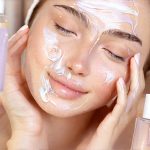Our modern lifestyles often keep us indoors, shielded from the very source of life – sunlight. This disconnect has far-reaching implications for our well-being, extending beyond just vitamin D levels. While we’re increasingly aware of sunscreen’s importance in preventing skin damage, a complete avoidance of sun exposure can inadvertently compromise crucial physiological processes, including hormonal balance and urinary health. It’s about finding a harmonious relationship with the sun, recognizing its benefits alongside potential risks, and incorporating strategic “sun breaks” into our daily routines to support overall vitality.
This isn’t about reckless tanning or disregarding safety precautions; it’s about acknowledging that sunlight plays an integral role in activating vitamin D synthesis within the body – a process vital for immune function, bone health, mood regulation, and even cellular repair. Furthermore, emerging research suggests a link between sun exposure, hormonal production (particularly related to estrogen and testosterone), and the maintenance of healthy urinary tract function through optimized vitamin D levels and supporting biological processes. Understanding how carefully managed sun exposure can contribute to these areas allows us to make informed choices that prioritize holistic health.
The Vitamin D – Hormonal Connection & Sunlight
Vitamin D isn’t technically a vitamin at all; it’s a prohormone, meaning the body converts it into active hormones. This conversion process is largely initiated by UVB radiation from sunlight hitting our skin. When UVB rays interact with cholesterol in the skin, they kickstart a cascade of events that ultimately lead to the production of Vitamin D3 (cholecalciferol). This then travels to the liver and kidneys for further activation into its hormonally active form. The resulting hormone influences numerous bodily functions beyond calcium absorption.
Hormonal health is intricately linked to adequate vitamin D levels. For example, in women, vitamin D plays a role in regulating the menstrual cycle and supporting healthy estrogen production. Deficiencies have been associated with irregularities in menstruation and potentially increased risk of reproductive issues. In men, vitamin D contributes to testosterone synthesis; low levels are correlated with reduced testosterone and potential impacts on muscle mass, energy levels, and libido. The connection isn’t always direct causation – it’s a complex interplay – but maintaining sufficient Vitamin D through sun exposure (and supplementation when necessary) is demonstrably beneficial for hormonal equilibrium.
It’s important to note that the amount of time needed in the sun varies drastically based on several factors: skin tone, geographical location, time of day, season, and even age. Lighter-skinned individuals generally require less exposure than those with darker skin pigmentation because melanin reduces UVB absorption. A good starting point is aiming for 10-30 minutes of midday sun exposure several times a week during warmer months, gradually increasing as tolerated, while always prioritizing safe practices like avoiding sunburn.
Sunlight & Urinary Tract Health: An Emerging Link
The relationship between sunlight, vitamin D, and urinary health isn’t as widely discussed but is gaining traction in research. Vitamin D receptors are present in the tissues of the urinary tract, suggesting a direct influence on its function. Active vitamin D has been shown to have antimicrobial properties, potentially helping to combat common urinary tract infections (UTIs). While not a cure for UTIs, sufficient levels can bolster the body’s natural defenses against bacterial colonization.
Beyond antimicrobial effects, vitamin D contributes to immune system regulation, which is crucial in preventing recurrent UTIs. A weakened immune response allows bacteria to flourish, increasing susceptibility to infection. By strengthening the immune system, adequate Vitamin D supports a more robust defense mechanism within the urinary tract. Furthermore, some studies suggest that vitamin D may play a role in maintaining the integrity of the bladder lining, potentially reducing inflammation and promoting overall urinary health. For additional support, consider exploring minerals that support urethral and bladder lining health.
The key takeaway here isn’t to rely on sunlight as a treatment for existing UTIs – seeking medical attention is paramount – but rather to proactively support urinary health through optimized Vitamin D levels achieved through safe sun exposure and/or supplementation under professional guidance. Maintaining hydration and practicing good hygiene remain essential components of preventative care. You may also want to consider natural supplements that support bladder health.
Optimizing Sun Breaks: Safe & Effective Strategies
Incorporating strategic sun breaks into your daily routine doesn’t require drastic changes, but it does necessitate mindful planning. Here are a few practical steps to consider:
- Timing is Key: Midday sun (between 10 am and 3 pm) provides the most UVB radiation for Vitamin D synthesis. However, this also means stronger UV intensity, so start with shorter exposure times.
- Gradual Exposure: Begin with 5-10 minutes of exposure and gradually increase as your skin tolerates it, avoiding sunburn at all costs. Pay attention to your skin’s reaction and adjust accordingly.
- Skin Tone Matters: Individuals with darker skin pigmentation require longer exposure times to produce the same amount of Vitamin D.
- Consider Location & Season: Geographic location and time of year significantly impact UVB availability. Further north or during winter months, sun exposure is less effective for Vitamin D synthesis.
- Supplementation as Needed: During periods with limited sunlight (winter, cloudy days), consider supplementing with Vitamin D3 after consulting with a healthcare professional to determine appropriate dosage.
It’s crucial to remember that sunburn is always harmful and defeats the purpose of responsible sun exposure. Always use protective measures like hats, sunglasses, and clothing when spending extended periods outdoors. Remember, this information isn’t a substitute for medical advice; consult your doctor before making significant changes to your health routine or supplement regimen.
The Role of Diet & Lifestyle in Amplifying Benefits
While sunlight is the primary driver of Vitamin D synthesis, dietary sources can complement these efforts. Foods rich in vitamin D include fatty fish (salmon, tuna, mackerel), egg yolks, and fortified foods like milk and cereal. However, obtaining sufficient Vitamin D solely through diet is often challenging. A healthy lifestyle that supports overall well-being further amplifies the benefits of sun exposure and vitamin D.
Regular exercise improves circulation and enhances the body’s ability to utilize vitamin D effectively. Reducing stress levels also plays a role, as chronic stress can deplete vitamin D stores. Prioritizing sleep is essential for hormonal regulation and immune function, both of which are intertwined with vitamin D. Finally, maintaining a balanced diet rich in nutrients supports overall health and optimizes the body’s response to sunlight exposure. Natural sleep enhancers can also be beneficial here.
Ultimately, achieving optimal Vitamin D levels and supporting hormonal and urinary health isn’t about chasing sunshine; it’s about integrating mindful sun breaks into a holistic lifestyle that prioritizes well-being. It’s a delicate balance between harnessing the benefits of sunlight while mitigating potential risks—a testament to the power of thoughtful self-care. Natural lighting and hormonal urinary support are essential for overall health.





















